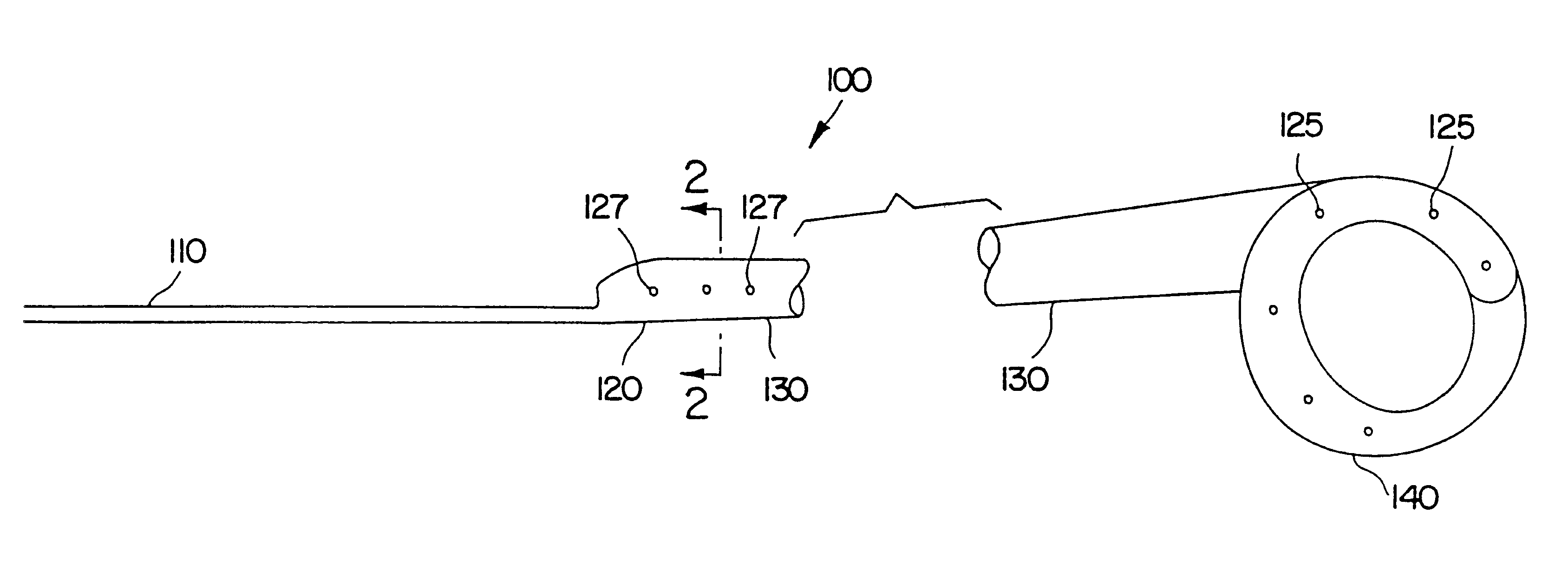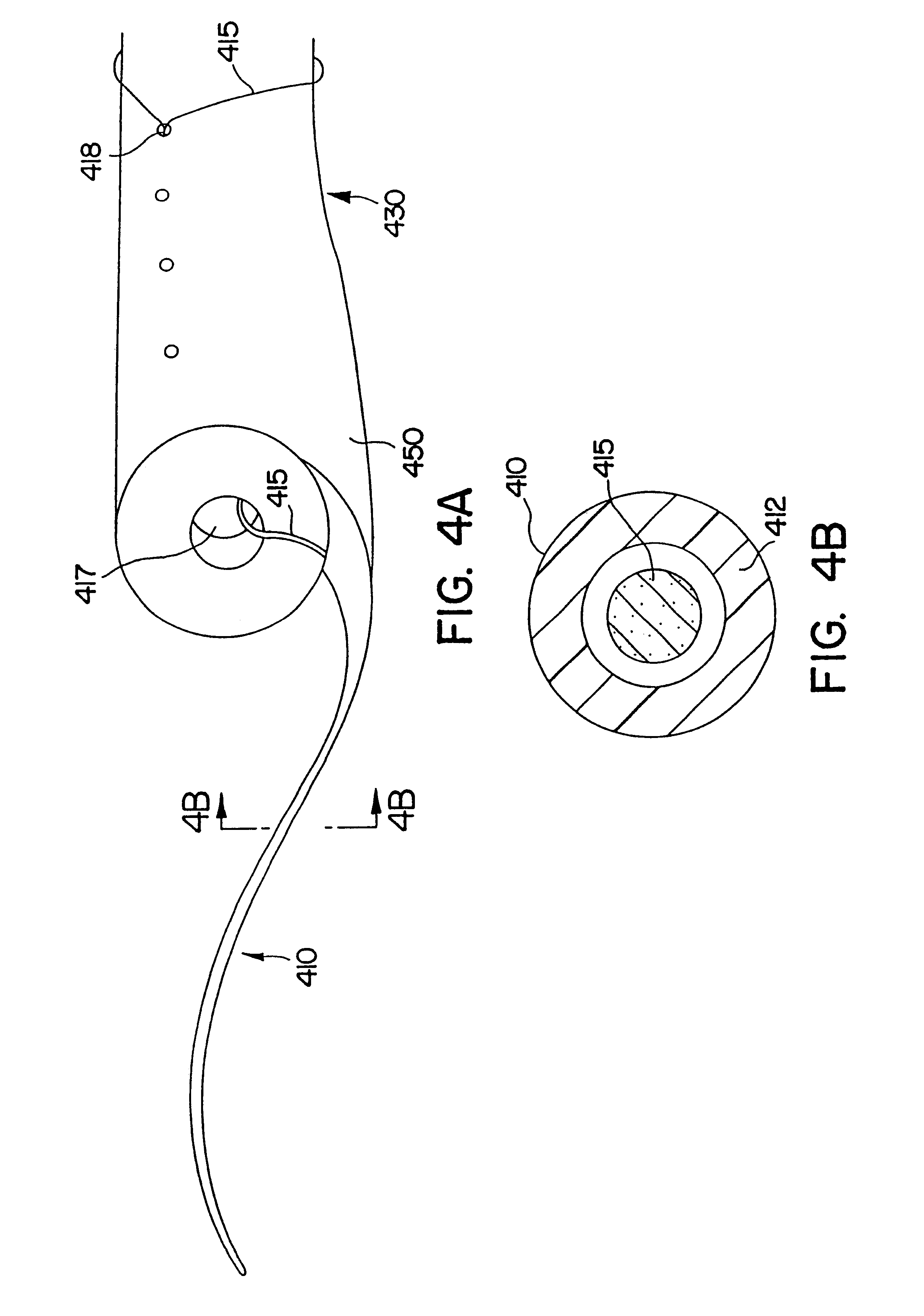Medical device with tail(s) for assisting flow of urine
a technology of a medical device and a tail, which is applied in the direction of prosthesis, wound drain, blood vessels, etc., can solve the problems of increasing patient discomfort, and achieve the effect of reducing patient discomfor
- Summary
- Abstract
- Description
- Claims
- Application Information
AI Technical Summary
Benefits of technology
Problems solved by technology
Method used
Image
Examples
Embodiment Construction
In FIG. 1, ureteral stent 100 includes an elongated tubular body 130 connecting coil end 140 to straight end region 120. Tubular body 130 is designed to extend from the renal pelvis through the ureter to a terminus upstream of the bladder. Tail 110 is attached to straight end region 120, and tail 110 extends along the ureter, across the ureter / bladder junction and into the bladder.
The two opposing end regions 120 and 140 of elongated tubular body 130 are illustrated in FIG. 1. Coiled end region 140 is designed to be placed in the renal pelvis of the kidney. For illustrative purposes, coiled end region 140 is shown with a pigtail helical coil although any shape that will retain the stent in place within the kidney will do. Coiled end region 140 includes several openings 125 placed along the wall of the tubular body; the openings may be arranged in various geometries (e.g., axial, circumferential, spiral). The entire tubular segment, including the region between the kidney and the bla...
PUM
| Property | Measurement | Unit |
|---|---|---|
| outer diameter | aaaaa | aaaaa |
| length | aaaaa | aaaaa |
| length | aaaaa | aaaaa |
Abstract
Description
Claims
Application Information
 Login to View More
Login to View More - R&D
- Intellectual Property
- Life Sciences
- Materials
- Tech Scout
- Unparalleled Data Quality
- Higher Quality Content
- 60% Fewer Hallucinations
Browse by: Latest US Patents, China's latest patents, Technical Efficacy Thesaurus, Application Domain, Technology Topic, Popular Technical Reports.
© 2025 PatSnap. All rights reserved.Legal|Privacy policy|Modern Slavery Act Transparency Statement|Sitemap|About US| Contact US: help@patsnap.com



